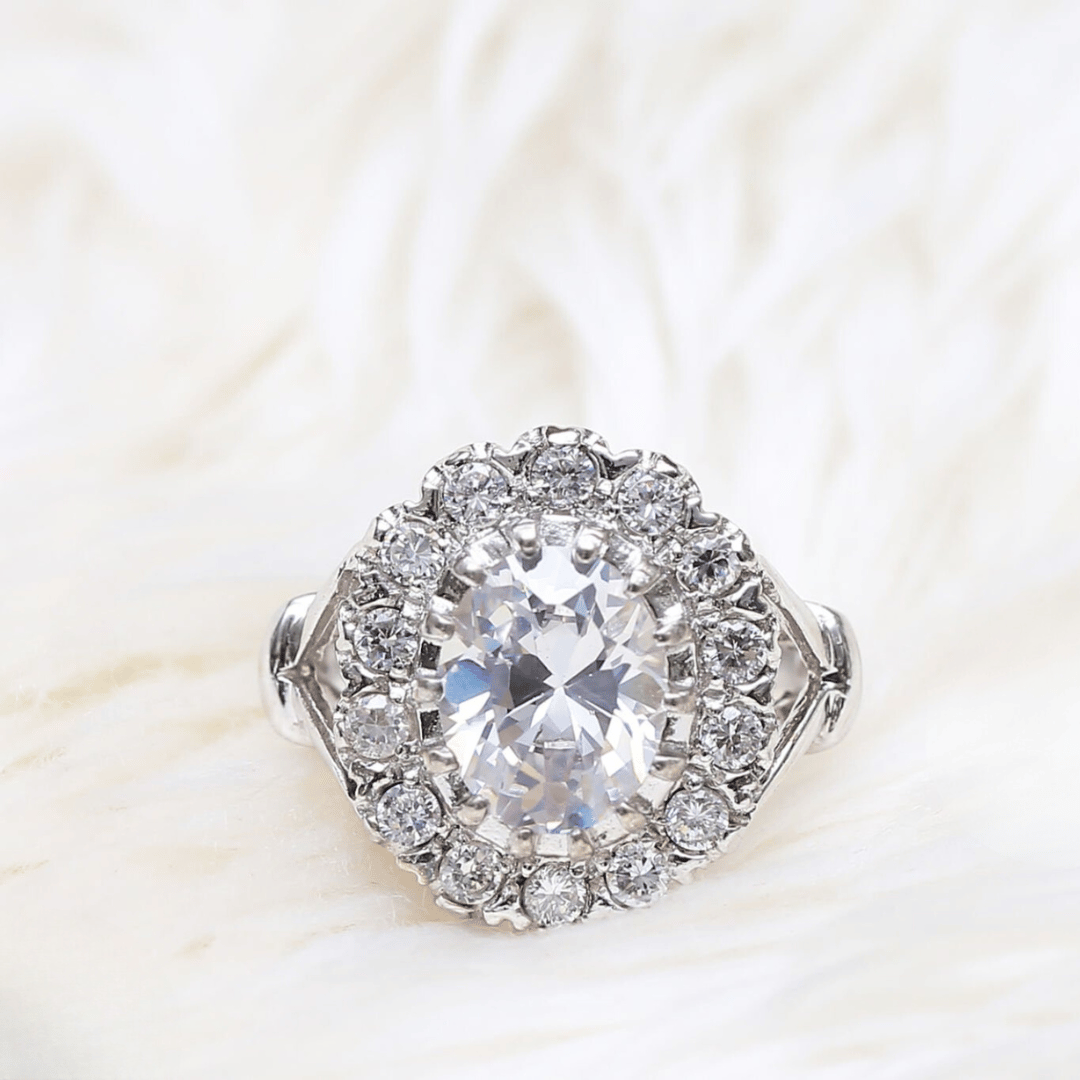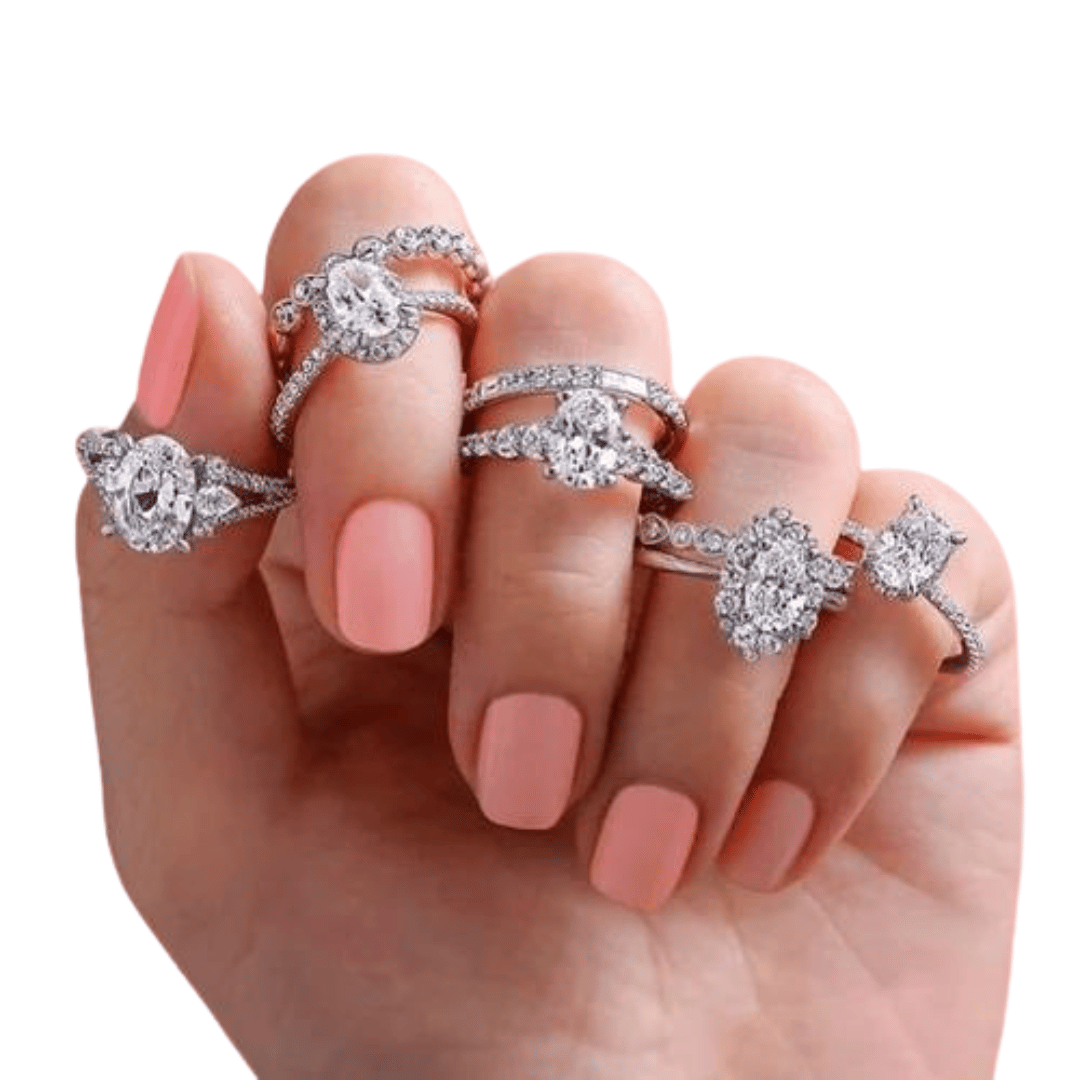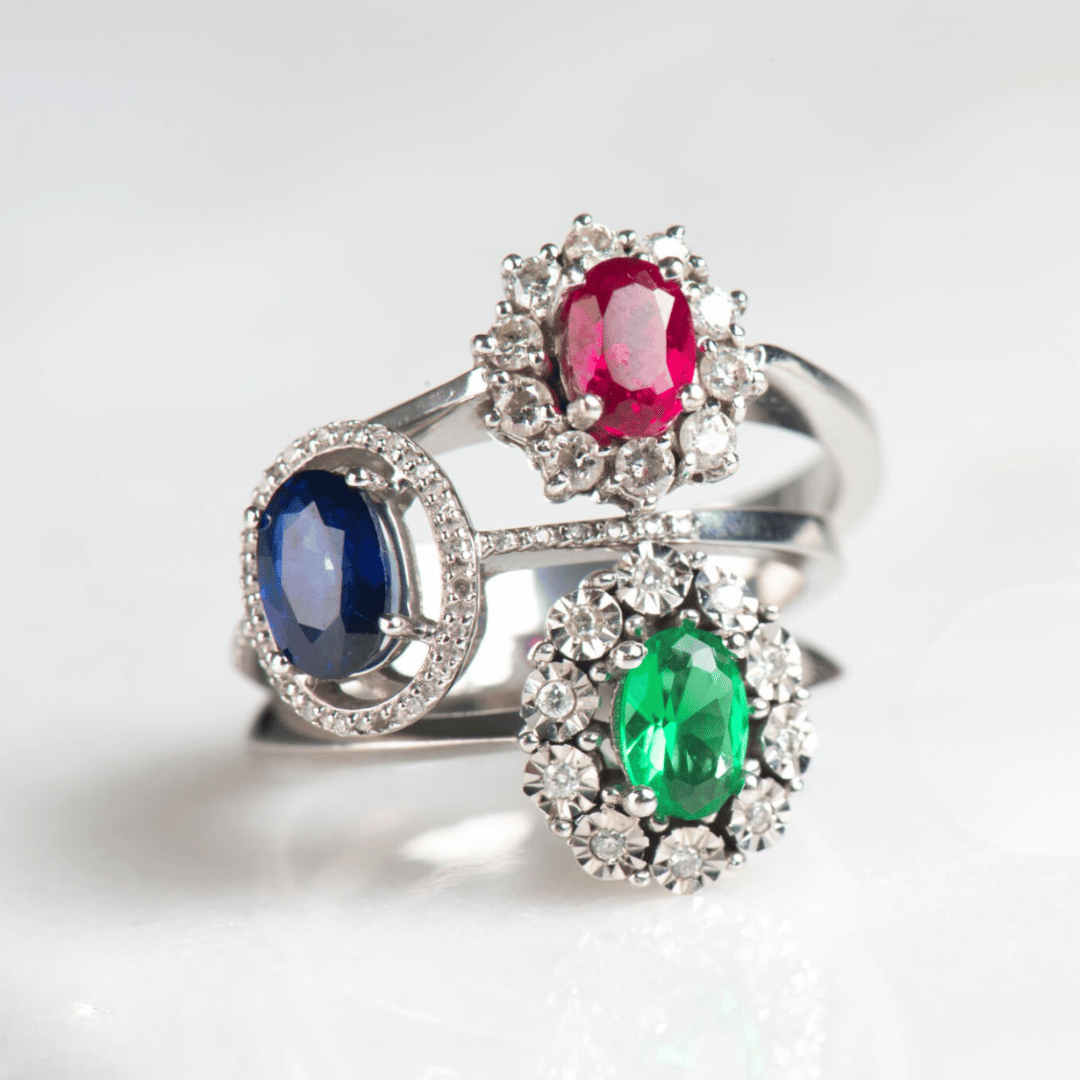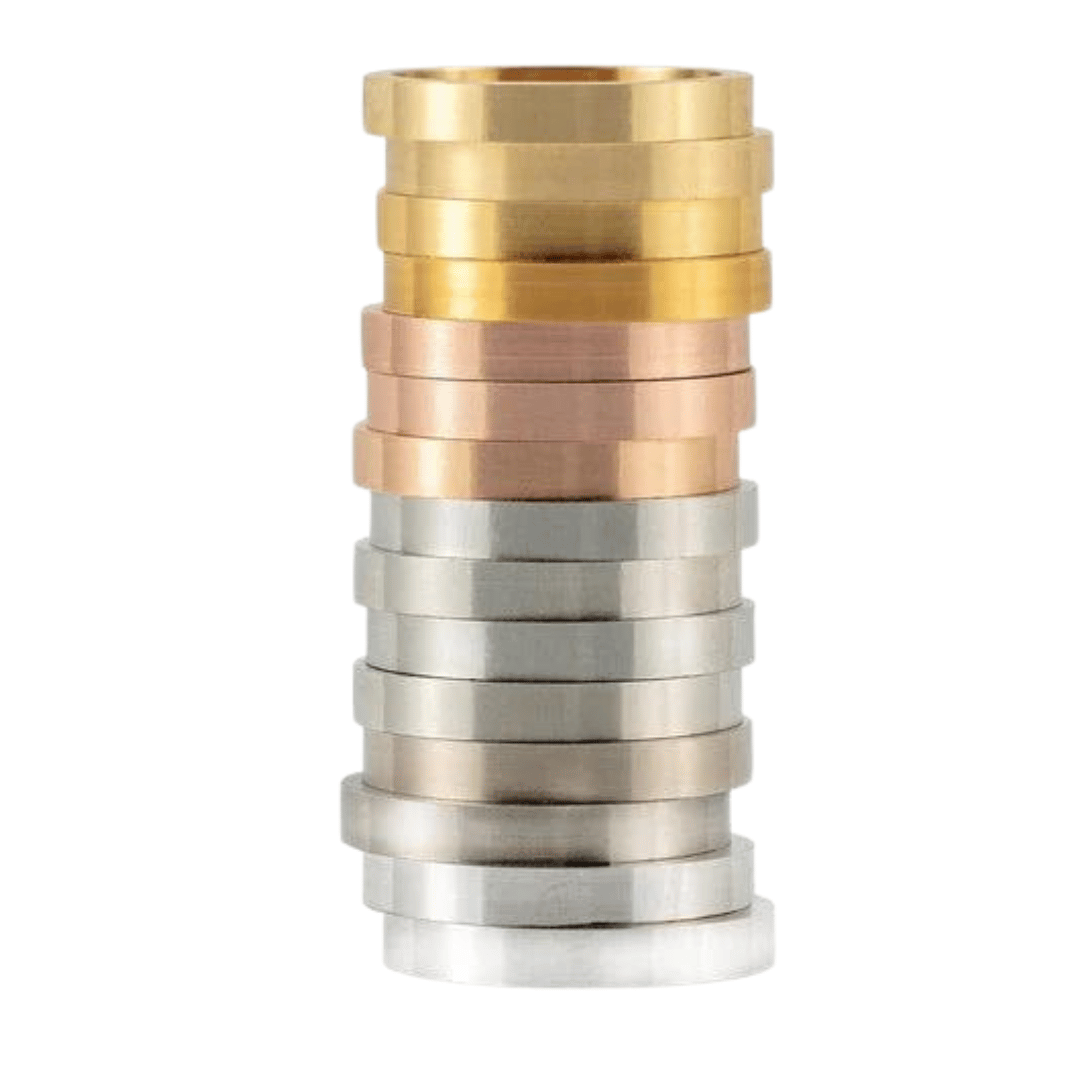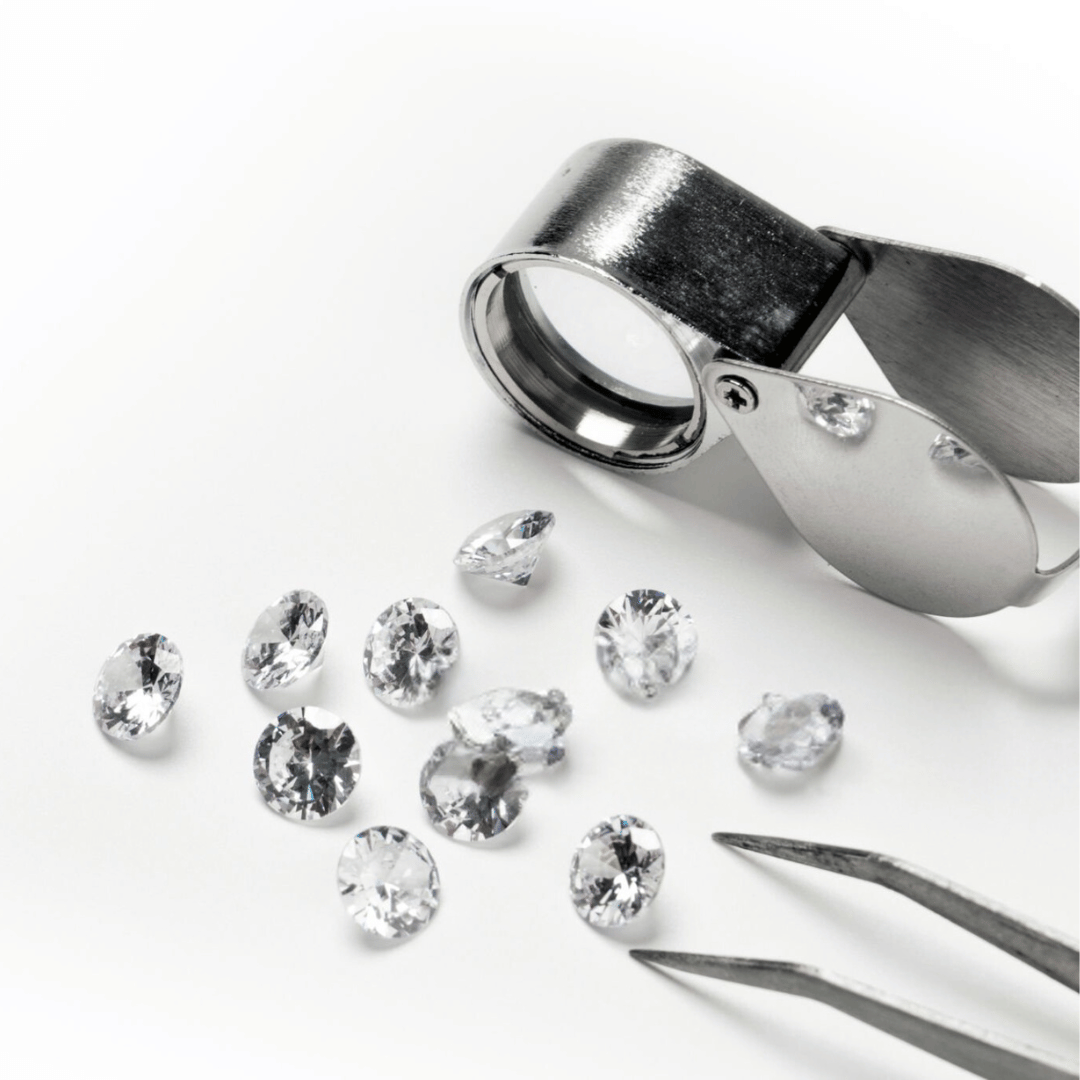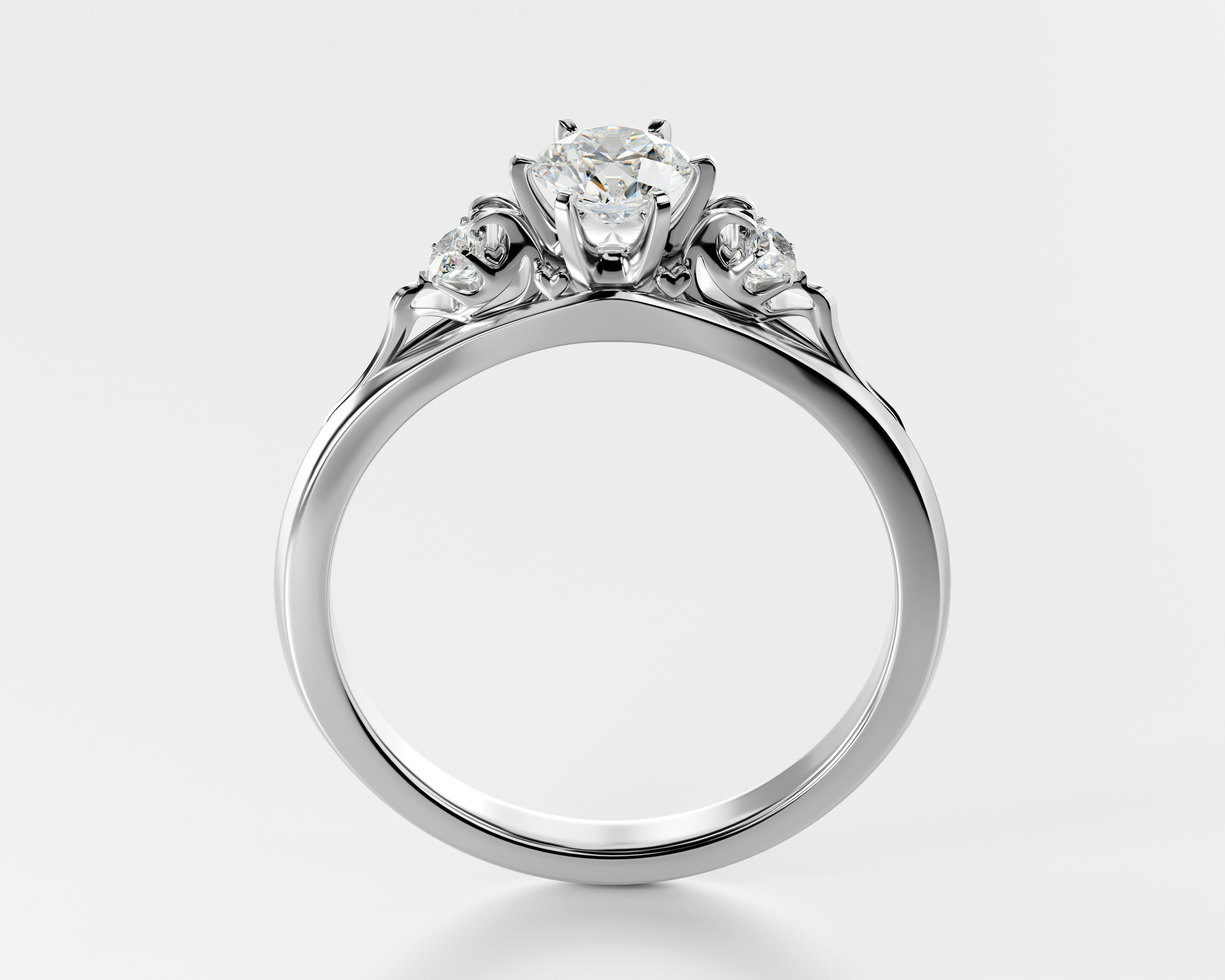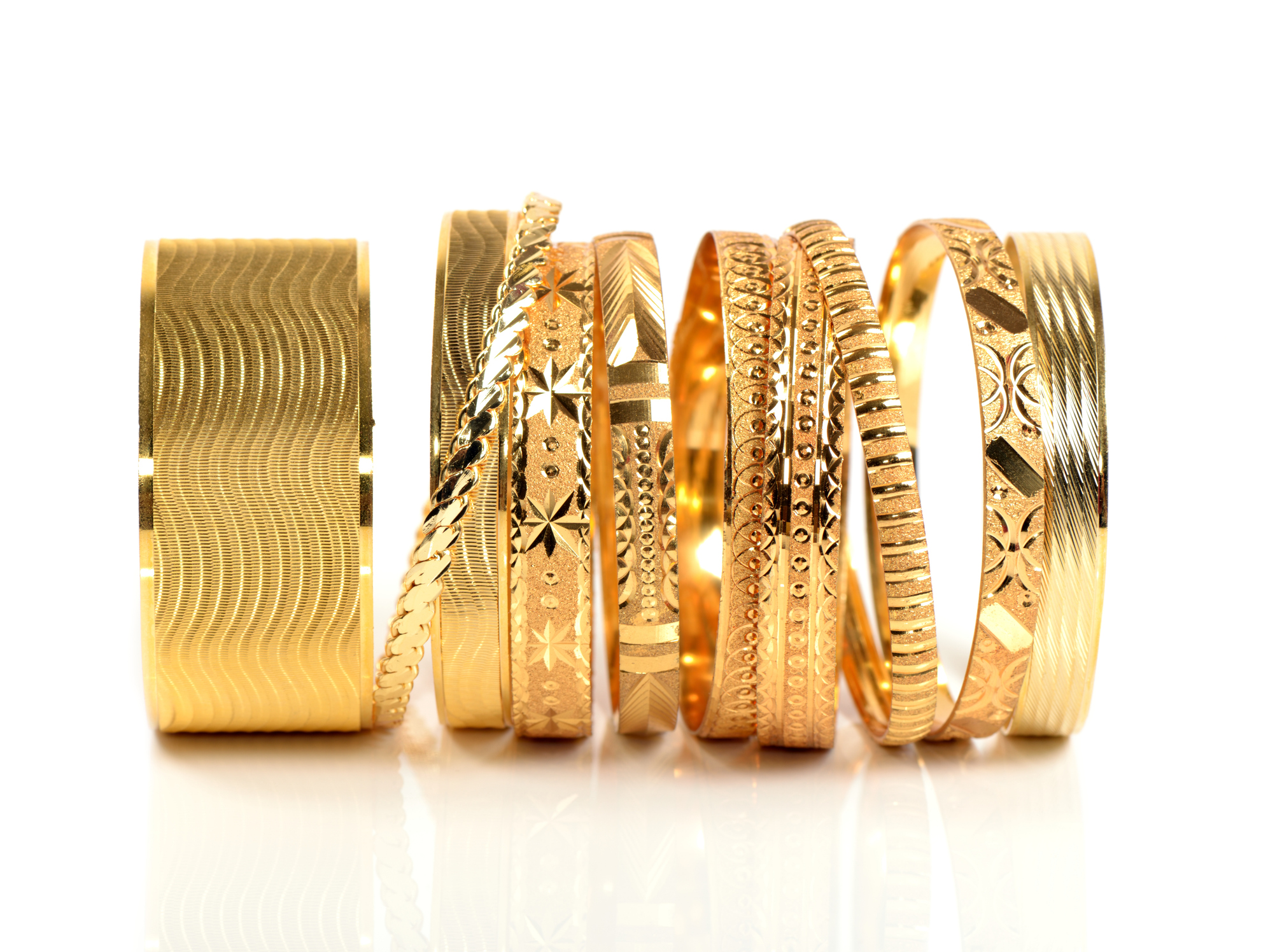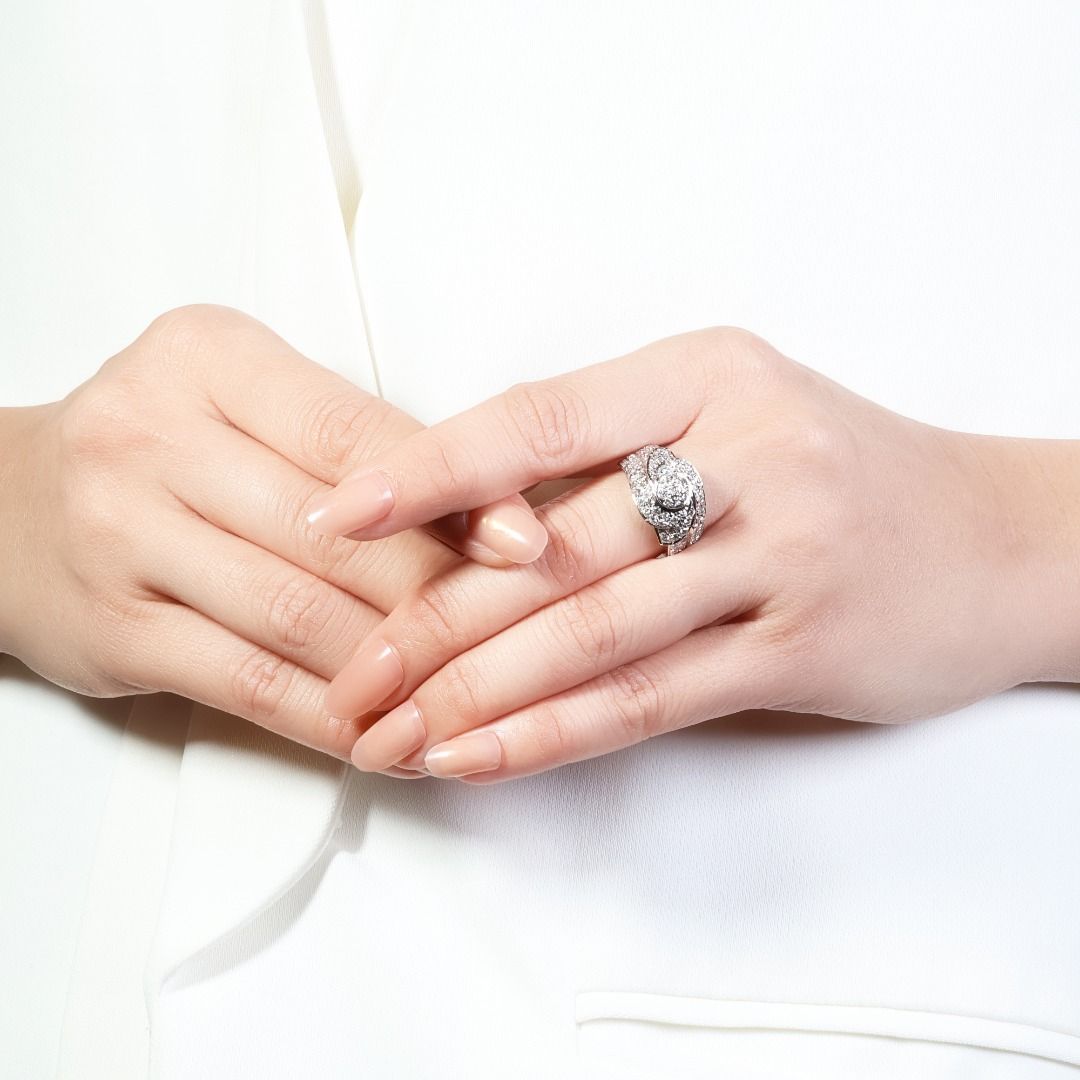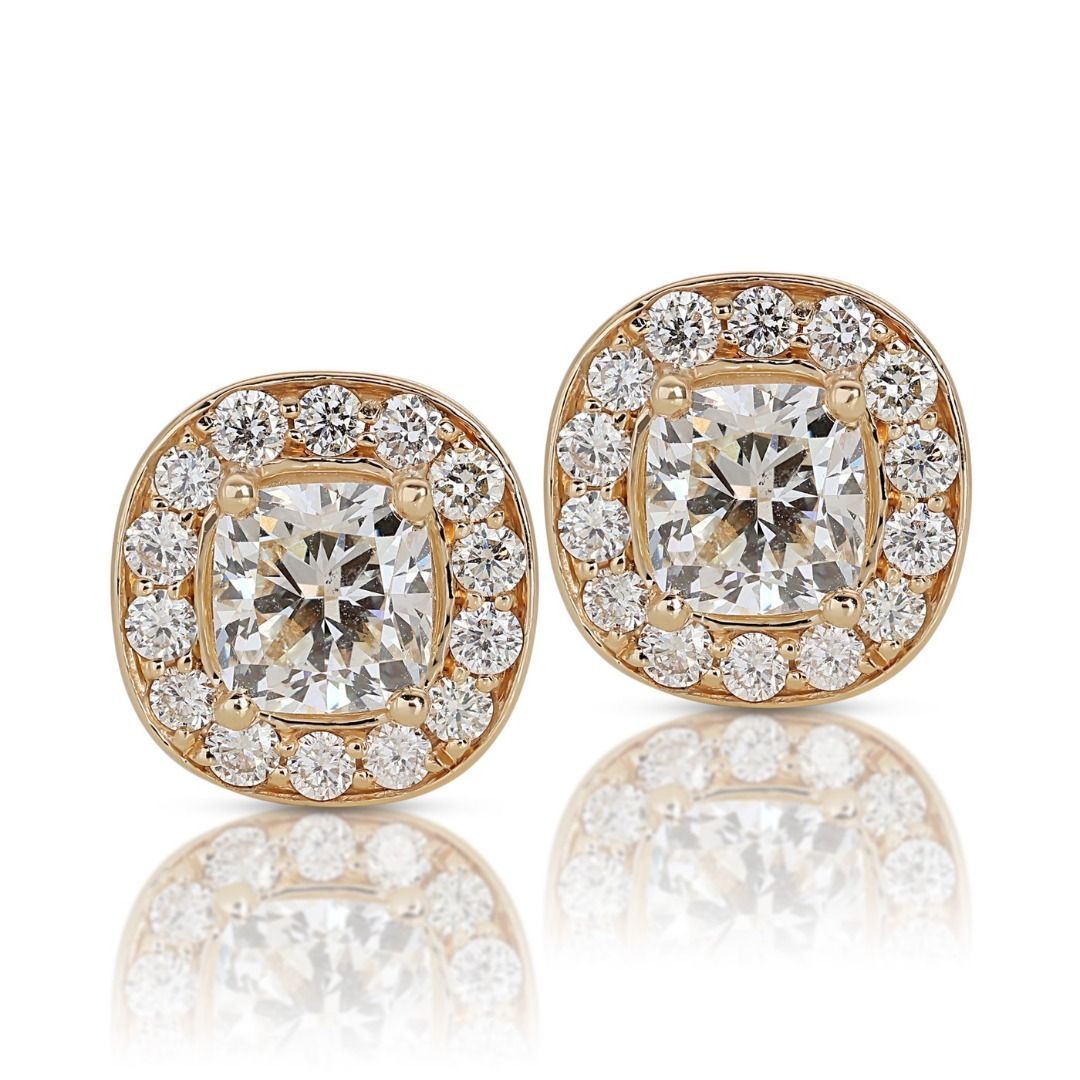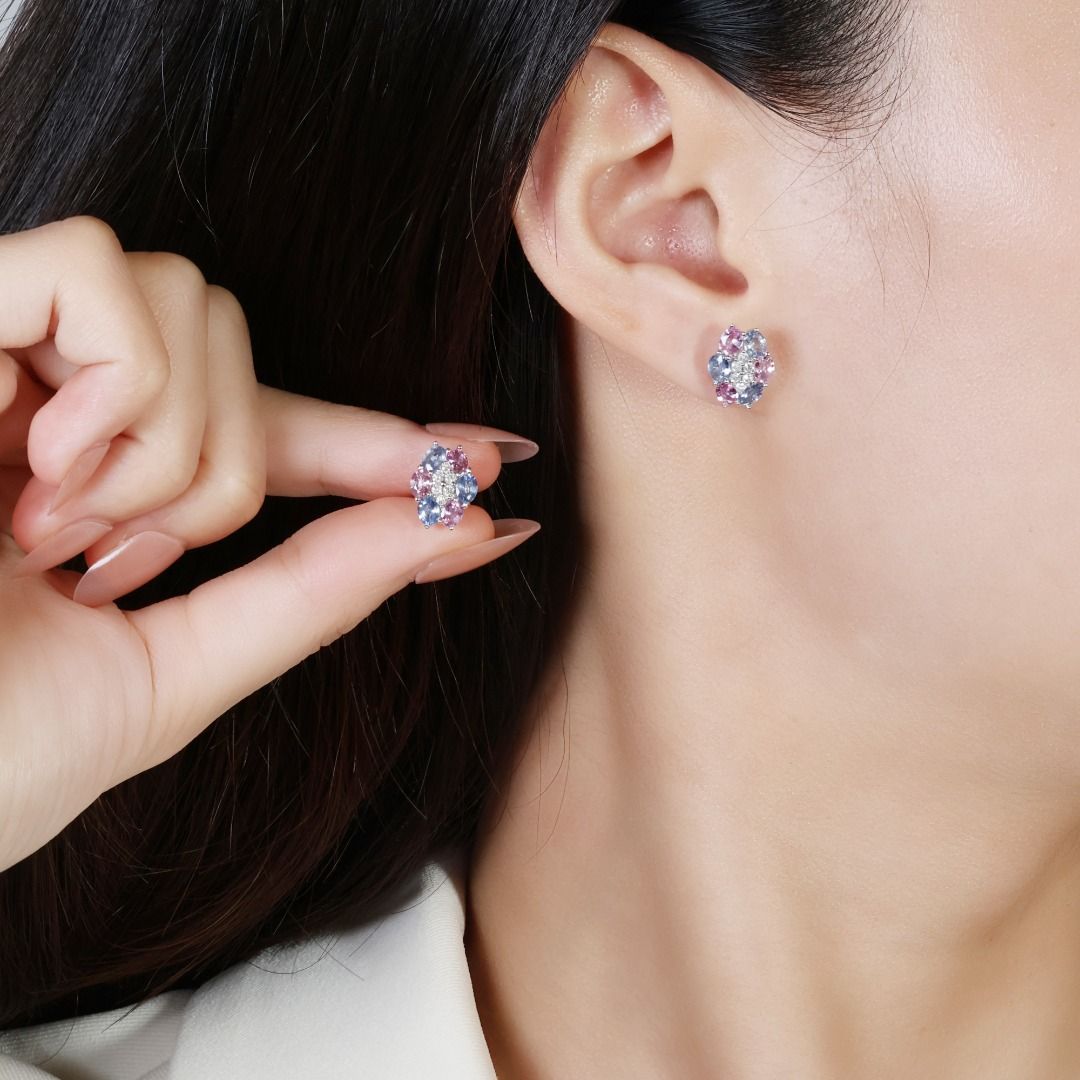How To Tell If A Diamond Is Real – 5 Tips
Key Highlights:
- Identify a fake diamond and decide if it deserves a place of honour or a child’s play box.
- Use a loupe: Look for imperfections (real diamonds have them!), sharp edges (fakes are rounded), and high-quality mounting (cheap metal suggests a fake).
- Test with caution: Gently rub with sandpaper (a real diamond won’t scratch, but this can damage a real stone, so consult a jeweller first)
- Take a breath: Fog up the diamond – real ones clear quickly (1-2 seconds), fakes take longer (3-4 seconds).
- Light reveals the truth: A real diamond sparkles grey and white, while a fake shows a rainbow of colours.
- Newspaper test: Place the diamond over text – a real diamond will obscure it due to refraction, while a fake will let you read through.
- Think your diamond might be fake? See a gemologist, not a jeweller, for a professional assessment.
This guide empowers you to decide whether your diamond deserves a safe deposit box or a place in your child’s play jewellery collection. Today, we’ll unveil the world of fake diamonds: how to identify them, what they might be instead, and what to do if you suspect one.
5 Tips to Unmask a Fake Diamond
The good news is that you can perform several home tests to assess your diamond’s authenticity.

1. Inspect with a Loupe
A loupe, a magnifying tool readily available from jewellers or online retailers, allows for close examination. Here’s how to spot a fake diamond with a loupe:
- Imperfections: Natural diamonds typically have tiny imperfections or inclusions. These are unique to each diamond and are considered nature’s fingerprints. If you see a diamond that appears completely flawless under the loupe, it might be a sign of a synthetic or fake diamond, as genuine diamonds rarely lack these natural marks.
- Sharp Edges: Under magnification, real diamonds have sharp, well-defined edges due to their crystal structure. In contrast, fake diamonds, often made from materials like cubic zirconia, tend to have more rounded edges. This difference is especially noticeable at the diamond’s facets, which should meet in sharp points in a real diamond.
- Mounting and Markings: The setting of the diamond can also provide clues to its authenticity. Real diamonds are typically set in high-quality metals such as gold or platinum, and you may find markings inside the band indicating these metals (e.g., “18K” for gold). If the diamond is set in a low-quality metal like silver or an unmarked setting, it could be a sign that the stone is not genuine. Additionally, some diamonds have laser inscriptions on their girdle (the outer edge), which can be verified with a loupe.
2. The Sandpaper Test
Diamonds are renowned for their exceptional hardness, making them one of the toughest natural materials on earth. Because of this, a real diamond can withstand the abrasion of materials like sandpaper without showing any scratches or damage. Gently rubbing a diamond with sandpaper should leave it unscathed, a testament to its durability. On the other hand, fake diamonds, which are often made from softer materials like glass or cubic zirconia, are much more susceptible to scratching. When subjected to the same sandpaper test, a fake diamond is likely to show visible signs of wear, such as scratches or surface damage.
Important Note: While this test can be useful, it’s important to exercise caution. Rubbing a diamond too aggressively with sandpaper or using coarse grit could potentially cause damage, even to a real diamond, especially if the diamond has inclusions or flaws. For this reason, it’s often best to leave such tests to professionals. Consulting a professional jeweller is a safer alternative, as they can accurately assess the authenticity of a diamond without risking damage to the stone.


3. The Fog Test: A Breath of Fresh Air
When you breathe on a diamond, both real and fake stones will momentarily fog up due to the moisture in your breath. However, the difference lies in how quickly the fog clears. A genuine diamond, with its excellent thermal conductivity, will disperse the heat from your breath almost immediately, causing the fog to clear within one to two seconds. In contrast, a fake diamond, typically made from materials like cubic zirconia or glass, retains heat longer. As a result, the fog on a fake diamond may linger for three to four seconds before it dissipates.
This simple test can be done anywhere and provides a quick way to distinguish between real and fake diamonds. However, it’s important to remember that environmental factors like humidity and temperature can influence the results, so it’s best to perform this test in a controlled environment for the most accurate outcome.
4. Let Light Be Your Guide
One of the most captivating features of a diamond is the way it interacts with light. Real diamonds are known for their unique light play, often described as a brilliant sparkle. When you examine a genuine diamond under light, you’ll notice that it primarily reflects a greyish-white light, often called “brilliance.” This is due to the diamond’s high refractive index, which bends and disperses light in a distinct way. Additionally, you’ll see flashes of spectral colors—this is known as “fire”—but these flashes are usually subtle and secondary to the white sparkle.
In contrast, fake diamonds, such as cubic zirconia, often produce a different kind of sparkle. They tend to exhibit a more dazzling, rainbow-like display, with much more pronounced and vivid flashes of color. While this multi-colored sparkle might seem attractive, it can be a sign that the stone is not a real diamond. The overly vibrant light play is due to the lower refractive index of the materials used in fake diamonds, which causes light to scatter more.
By observing the type and quality of the sparkle, you can use light as a guide to help distinguish between real and fake diamonds.


5. The Newspaper Test: Refraction Revelation
One of the defining characteristics of a diamond is its exceptional ability to refract light, a property that contributes to its brilliance. To test this, you can use the Newspaper Test, which relies on the diamond’s refractive properties. Simply place the diamond, face down, over a piece of newspaper or any printed text.
If the diamond is real, its superior light refraction will scatter the light passing through it, making it difficult to read the text beneath. The letters will appear blurry, distorted, or completely obscured. This effect is due to the diamond’s high refractive index, which bends and redirects light in multiple directions, preventing it from passing straight through.
On the other hand, a fake diamond, such as one made from glass or quartz, has a much lower refractive index. When placed over text, these materials allow light to pass through with less distortion, enabling you to read the text with relative ease. The letters will appear clearer and more legible, which is a clear indication that the stone is not a genuine diamond.
The Newspaper Test is a simple yet effective way to differentiate a real diamond from a fake, highlighting the diamond’s unique optical properties. However, this test works best with larger stones that have a flat bottom (table) and should be done in good lighting for the most accurate results.
My Diamond Is Not Real? Now What?
If these tests indicate that your diamond might not be genuine, it’s important not to jump to conclusions. The next step is to seek the expertise of a professional gemologist. A qualified gemologist has specialized training and tools to accurately assess the authenticity of a diamond. They can perform more advanced tests, such as using a diamond tester or analyzing the stone under a microscope, to determine whether it’s real or fake.
It’s crucial to choose a certified gemologist rather than a regular jeweller, as gemologists have specific knowledge in identifying gemstones and can provide a more reliable evaluation. Misidentification by someone less qualified could lead to the unfortunate mistake of discarding a real diamond.
Remember, only a professional gemologist can give you a definitive answer about your diamond’s authenticity, so it’s worth the time and effort to get a professional opinion. If your diamond turns out to be fake, you’ll at least have peace of mind knowing the truth, and if it’s real, you can confidently cherish or use it as you intended.


What Could My Fake Diamond Be?
Even if your diamond isn’t real, it could hold value beyond a simple trinket. Let’s explore some common diamond imitators:
- Cubic Zirconia (CZ): A readily available, colourless, synthetic crystal that’s quite hard but prone to scratches. It’s inexpensive and has little resale value.
- White Sapphire: Sapphires typically come in blue, but occasionally appear white. These exceptionally valuable gemstones are worth holding onto.
- Moissanite: A rare and dazzling stone known for its rainbow sparkle, unlike a diamond’s white and grey sparkle.
- White Topaz: Usually yellow, red, grey, or brown, topaz can also be white, leading to confusion with diamonds. It’s a semi-precious stone, softer than a diamond.
- Synthetic Diamond: Grown in a lab, a synthetic diamond boasts the look, feel, and chemical composition of a real diamond. However, it can be significantly less valuable (up to 30% less).
Conclusion
While a genuine diamond is a prized possession, these simple home tests give you the tools to confidently assess its authenticity. If the results indicate that your stone might be a fake, don’t be discouraged! Many beautiful and valuable gemstones can resemble diamonds. By consulting a gemologist, you can uncover the true nature and potential worth of your stone. So, the next time you find yourself questioning a diamond’s authenticity, grab a loupe, take a deep breath, and let these easy checks guide you to the sparkling truth.




